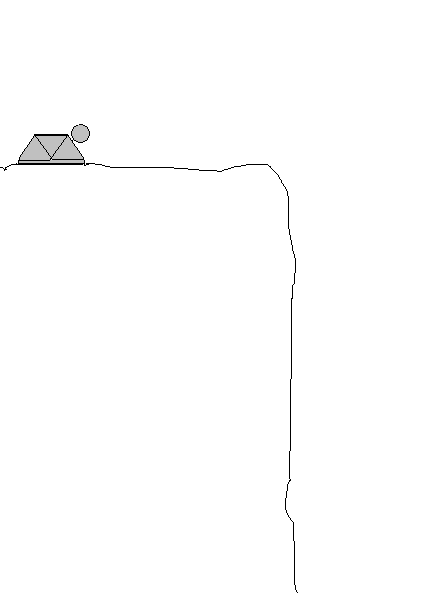Introduction
Definition of Life
Motivation
Preliminary
Steps
Present Life
Past Life
Geological Survey
Sample Collection
Spectroscopic Analysis
Organic Analysis
Biology Experiments
Thin Section
Isotope Analysis
Experimental Design
Cliffhanger
The cliffhanger is a small rover that will be deployed over some cliffs in the vicinity of our landing site. It will traverse down the edge of the cliff, and will collect rock samples from various depths. This novel concept is due to a Pennsylvania State University team of students; see animated illustration below.

Penn State University
Cliffhanger Team, 2000
This mechanism will be ideal for obtaining samples, because it will give us access to rock layers and sedimentary deposits far deeper than the drill. Mars has some of the deepest cliffs in the solar system, with the largest, Valles Marineres, at over 2,000 km deep. This method will be like looking into the deep past; it will give us a detailed information about the geological and geochemical history of the planet. It will allow us to assess and evaluate the climatological models of the Martian past, and give us further evidence of when life was possible on Mars.
The cliffhanger will have a small horizontally-directed drill that will collect rock samples at various depths along the rope. These samples may contain fossilized remains of ancient life, or may even harbor present life.
The cliffhanger and deployment mechanism are estimated to weight on the order of 50 kg, with 6-10 kg of rope. Its physical dimensions are estimated at 70 cm by 40 cm. The cliffhanger can descend as far down as 2 km. The cliffhanger will contain a high-resolution, wide-angle camera, and will take pictures of the cliff wall as it descends down. The cliffhanger will also carry an Alpha Proton X-Ray Spectrometer (APX), as well as miscellaneous climate instruments such as pressure, temperature, and wind sensors. Anytime the APX determines a new layer of rock, the cliffhanger will take another sample. The samples will be returned back to the top of the cliff, for further analysis in the laboratory.
For more detailed specifications on the Cliffhanger, please see the Penn Sate University Cliffhanger Team Website.